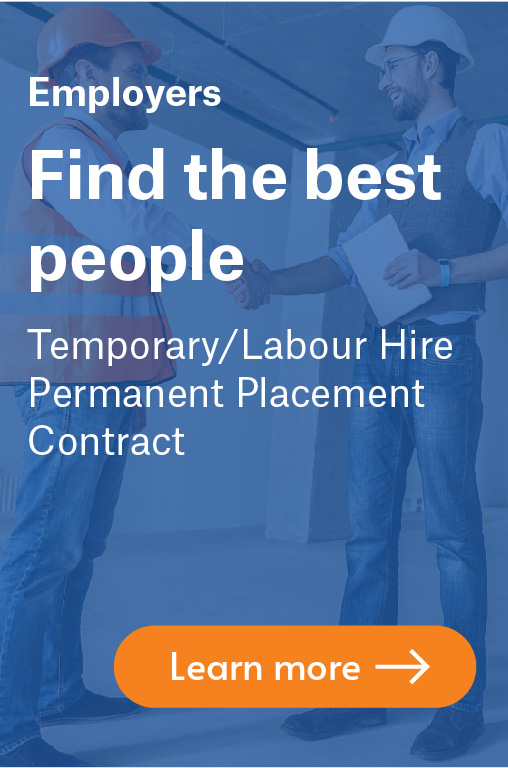If there’s one positive takeaway from the pandemic, it’s that it forced workplaces to radically re-evaluate their ways of operation. And we’re not just talking a WFH culture; we mean an entire roots-and-branch reshaping of how businesses can align better with their employees’ values, goals and motivations.
According to a poll of HR professionals by Aon, 41% of employers planned to re-evaluate their employee value propositions in light of the Coronavirus crisis.
While Friday afternoon drinks and free office fruit are all great perks, they could be seen as superficial novelties rather than lasting, thoughtful changes that will satisfy employees on a multidimensional level.
By building a compelling employee value proposition for your team, you will go a long way to reaping rewards in the workplace.
From how to establish your employees’ expectations to executing and promoting a killer EVP, here we present your ultimate guide to creating a strong employee value proposition.
What is an employee value proposition?
Quite simply an EVP is the financial and non-financial benefits a business offers its employees in exchange for their hard work. A strong EVP should look beyond simple perks, instead, offering a holistic ecosystem that supports the team’s wellbeing, development and values as well.
When implemented well, your EVP should help attract and retain employees, while boosting your organisation’s performance and growth. Indeed, Gartner reports that businesses that effectively deliver on their EVP can decrease annual employee turnover by just under 70%, while increasing new hire commitment by nearly 30%.
1 Start by evaluating your current EVP
A top-notch EVP shouldn’t just be a half-baked string of incentives, it should define your company’s culture. Get started by looking at what you are currently offering you team as part of your employee value proposition – if you even have one.
Assess what it is doing and not doing. Is it people-driven that supports communication? Does it foster loyalty and respect? Does it offer them a healthy work-life balance? Are the team sufficiently compensated for their hard efforts? Does your business even offer the basics like fair annual leave entitlement?
The main point of this exercise is to figure out what you are currently not doing, so you can now start to make positive changes.
2 Establish what your employee’s expectations are
Employees’ expectations have shifted in terms of valuing what is really important to them. According to a study by Atlassian and PwC Australia, 69% of Australian respondents would turn down a promotion to preserve their mental health, and over 60% of workers also want their employers to take action on social and environmental issues like climate change, equality, and poverty.
To get to know your team better, invite your team to share what they want and expect from you as their employer. It goes without saying that opportunities for progression, financial rewards, a harmonious working environment, strong colleague relationships and a sense of accomplishment will all feature highly.
For EVP success stories, look to rental solutions provider, BNP Paribas Leasing Solutions. Their culture-driven EVP, ‘It’s a People Thing’ led to a 100% employee satisfaction rate. It was through a series of workshops and one-on-ones, that the company established it was relationships that were most valued. Proof that speaking and listening to your team is the vital first step to creating a great EVP.
BNP Paribas Leasing Solutions’ EVP supported relationship building and grew from a single campaign to a long-term culture change program. The result? A 1.2% reduction in employee turnover, 12% increase in employee engagement above the group average and 100% of recruiters say it helps BNP Paribas Leasing Solutions stand out from the crowd.
3 Create meaningful incentives that support personal professional growth
Once you have established what your team’s values and expectations are, it’s time to build an employee value proposition that goes beyond the usual.
Look at what is achievable for the size of your organisation. If you’re a larger business, consider what your policies are when it comes to:
Employee meals
Extra annual leave
Insurance benefits
Maternity leave
Company car schemes
Child care support
Parking
These are all fundamentals of a good EVP. If, however, you’re a small to medium-sized enterprise (SME) with a lower budget, be creative with what incentives you can offer like:
Office/WFH hybrid flexibility
Employee rewards and recognition
Travel allowance
But then to really set your business apart, go one layer deeper by looking at how your EVP can support your team’s wellbeing, professional growth and colleague relations. These are the cornerstones of a winning EVP that will help you attract and retain top-tier talent.
Consider what your workplace can do to foster collaboration, communication and connection which will lead to positive relationships between team members. Make mental health a focus by recognising each team member is unique and needs different levels of support. You could create employee assistance programs, one-on-one check-ins, mindfulness or meditation initiatives.
When it comes to creating an inclusive community in the workplace, global travel group Kuoni led the way with their transformational ‘People Deal’ EVP. From making the organisation a better place to work to boosting employee engagement and attracting great people, the company’s goals were quite straightforward.
Their unique, global approach was what made a difference. After running focus groups in nine locations globally, including Australia, China, Japan, Indonesia, Dubai, US and Europe as well as doing employee opinion surveys, they were able to identify things that would make a measurable impact on engagement.
The ‘People Deal’ itself created a global community with a shared purpose. Its own website encouraged Kuoni employees to be part of a conversation, inviting them to share their own ways of working by uploading pictures or telling their stories.
This five-year EVP resulted in increased engagement for Kuoni and set standards of leadership and behaviours.
No matter how big or small your business, never underestimate the power of community-building when it comes to creating your EVP.
4 Be strategic in how you implement and promote your EVP
You have a wonderful shiny new EVP that you want to shout from the rooftops, and how you go about it shouldn’t just be an afterthought. A Cornell University report stated that when organisations live up to their marketed EVP, new employees arrive with a higher level of commitment at 38%, compared to organisations that don’t live up to their marketed EVP, which are at just 9%.
Firstly, when it comes to branding and a campaign name, think about how you want to position the company. Do you want to be seen as an innovator? A compassionate organisation? One whose priority is championing career progression? Make sure your message is on point with your EVP itself.
Take into account what your business’s goals are as well. Is it to attract better talent? To boost employee engagement? To define the essence of your company? To stand out head and shoulders above your competitors?
Next, coordinate a plan on how you will promote your EVP in accordance with the above. Methods you can use to do this could include:
Running a social media campaign
Featuring it on your company website
Writing about it on your company’s blog
Filming a promotional video
Mentioning it in internal comms like newsletters
Adding it to your job advert descriptions
Assign high-profile individuals in your company as EVP ambassadors
5 Monitor your EVP’s results
After a set duration, it’s now time to see if your EVP campaign has been working to measure your ROI. Here are some high performance indicators (HPIs) you can use to monitor its success:
Get employee feedback
Whether you do a survey or individual interviews, get feedback from your employees. Do they feel happier and more satisfied? Are they more engaged and productive?
Assess website and social media traffic data
How are your online metrics faring? Hopefully you will have more traffic to your business’s website (especially its career page) and plenty of social media clicks and engagement.
Look at team turnover rate
If you are retaining more employees and losing fewer, this is a good sign your EVP is working.
Analyse time to hire
Are you recruiting roles quicker and more effectively, with better applicant-to-interview ratios? If so, this is another great sign your EVP has been effective.
Examine your company ratings and reviews
When disgruntled employees leave, they could also be tempted to leave a poor review of the business on sites like Glassdoor or Seek. If your organisation’s rate of positive reviews increases, it could be down to your excellent EVP.
Summary
Look at what your organisation is (or isn’t) doing in terms of an employee value proposition.
Invite your team to share what their values, aspirations and expectations are in the workplace.
Create a holistic EVP that meets and exceeds employee expectations by not just offering the bare minimum, and supporting their professional and mental wellbeing too.
Be strategic and purposeful with how you implement and promote your EVP campaign across you company’s channels and networks.
After a period of time, monitor the results of your EVP to see how successful it has been.
If you are open to new opportunities, contact a recruitment agency like Trojan Recruitment Group and receive advice from the experts in labour-hire, permanent and contract staff.
References
https://www.peoplemanagement.co.uk/news/articles/two-fifths-of-firms-re-evaluating-evp-in-light-of-covid#gref
https://www.gartner.com/en/human-resources/insights/employee-engagement-performance/employee-value-proposition
https://www.thisishome.co.uk/case-studies/bnp/
https://talentsmoothie.com/employee-value-proposition-evp-case-study-kuoni-group/
https://www.semanticscholar.org/paper/Is-There-a-Correlation-for-Companies-With-a-Strong-Park-Zhou/38dd86dc50e570a1b98eb96c6a9a3dd4364496c9?p2df
![Blog [04 Apr 22] When Free Fruit And Flex Isnt Enough](/rails/active_storage/representations/proxy/eyJfcmFpbHMiOnsibWVzc2FnZSI6IkJBaHBBOXY0Rmc9PSIsImV4cCI6bnVsbCwicHVyIjoiYmxvYl9pZCJ9fQ==--8502df4ee167b6019a0b0d8de088f11add11e0b3/eyJfcmFpbHMiOnsibWVzc2FnZSI6IkJBaDdDVG9MWm05eWJXRjBTU0lJY0c1bkJqb0dSVlE2QzNKbGMybDZaVWtpRGpFd01EQjROVEF3WGdZN0JsUTZER2R5WVhacGRIbEpJZ3REWlc1MFpYSUdPd1pVT2dsamNtOXdTU0lSTVRBd01IZzFNREFyTUNzd0Jqc0dWQT09IiwiZXhwIjpudWxsLCJwdXIiOiJ2YXJpYXRpb24ifX0=--3f00effad91c017ecfb2c8f1b726dfc5b419ce16/Blog%20%5B04%20Apr%2022%5D%20when-free-fruit-and-flex-isnt-enough.png)

